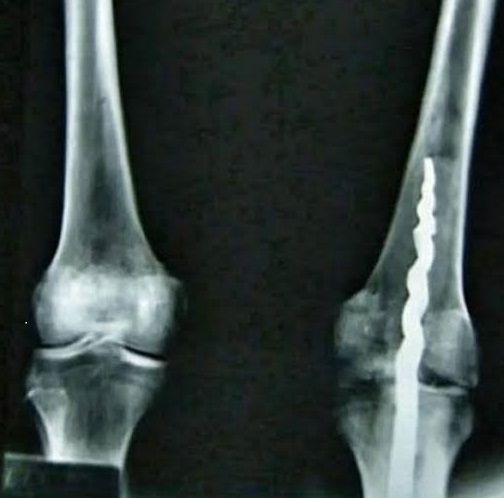Inspired by the Ramses-II exhibition currently at the Australian Museum, Sydney, A.M. Orthopaedics is proud to present its own little bit of history.
Did you know that the first known intramedullary nail was found in a mummy named Usermontu (from 1,500 BC)? It looks like Usermontu had avascular necrosis or septic arthritis of his left knee and needed the nail to prepare him for the after-life.
Usermontu’s nail was made of iron (our modern nails are made of Titanium). Also, around Usermontu’s nail, an organic resin was used to fill the dead-space in the femoral and tibial canals which stabilised the nail in place when the resin set (this would pre-date what we know to be, “first-generation,” bone-cementing technique).

Please note that A.M. Orthopaedics does not have the mummy of Usermontu 😊 , however, we have many other interesting historical orthopaedic artefacts such as this steel Kuntscher nail (1940) which Dr Sami Farah retrieved in an operation he performed on a World War II veteran over 15 years ago.
Gerhard Kuntscher’s intramedullary nail allowed German airmen with femoral fractures to return to service within weeks. His ground-breaking invention was only accepted in other countries when allied POW’s who had their fractures treated this way returned home after the war with their femoral nail still in place (like the patient that Dr Farah operated on).


